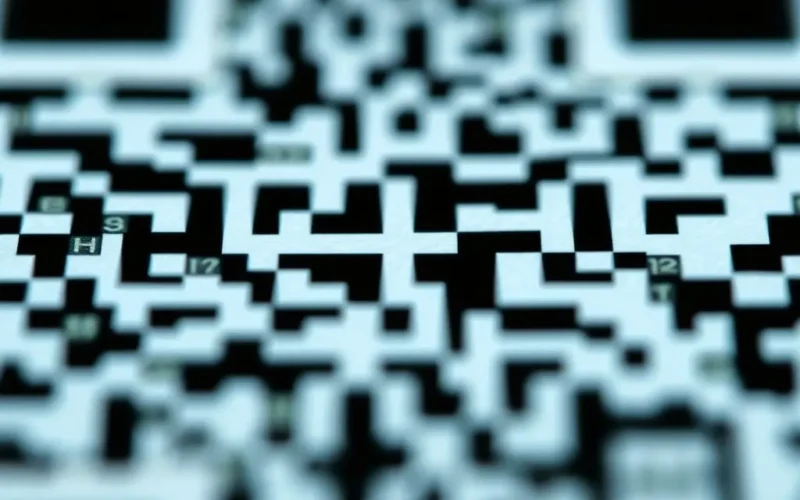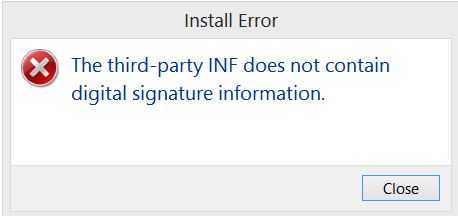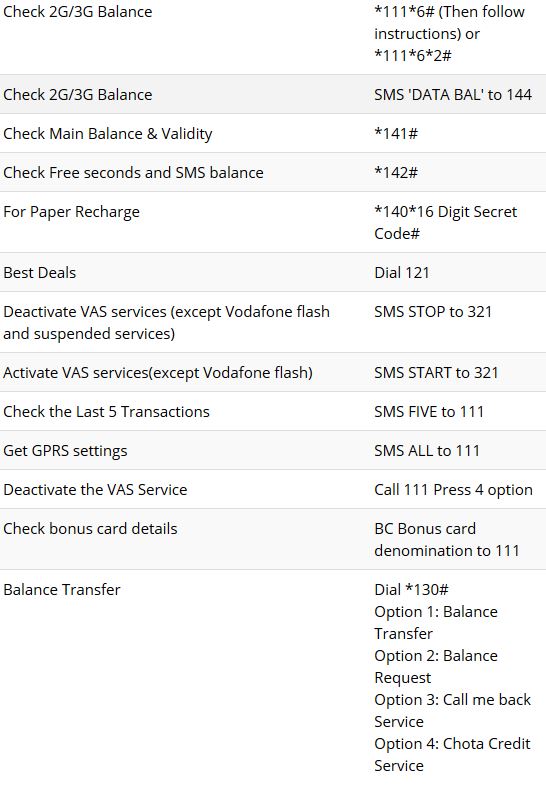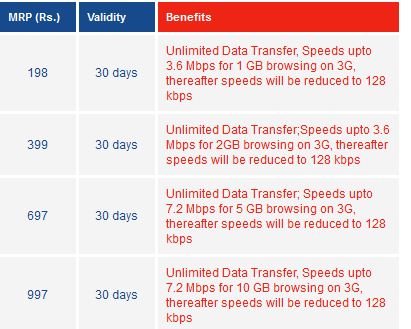So, modern life… it’s like tech decided to become our all-knowing, slightly erratic personal assistant. One minute you’re navigating relationship algorithms more complex than quantum physics (while your toast burns, naturally), the next you’re trying to figure out if ‘K’ is a passive-aggressive full stop or just, well, ‘K’. Tech is in our DMs, our dating apps, even our dentist’s appointment reminders. Love it or roll your eyes at it, there’s no denying it’s changed the game, often in ways we don’t even pause to consider.
Speaking of tech whispering sweet (or sometimes just purely functional) nothings into our devices, have you ever paused to think about those ubiquitous black and white squares? Yes, QR codes! They’re plastered on everything from cereal boxes to concert tickets, bus stops to business cards. We scan them without a second thought, but how exactly do these digital hieroglyphs pack so much information – URLs, contact details, Wi-Fi passwords, and more – into such a compact, pixelated space? Get ready to decode the magic behind them!
Table of Contents
First Off, What Exactly IS a QR Code?
QR code stands for “Quick Response” code. Developed in Japan by Denso Wave (a Toyota subsidiary) in 1994 to track automotive parts, these two-dimensional barcodes quickly outgrew their industrial origins. Unlike their one-dimensional cousins (the traditional barcodes you see on groceries, which only store data horizontally), QR codes store information both horizontally and vertically. This is key to their much larger data capacity.
Essentially, a QR code is a visual representation of data that a machine, like your smartphone camera, can read. But it’s not just a random jumble of squares; it’s a highly structured and ingenious system.
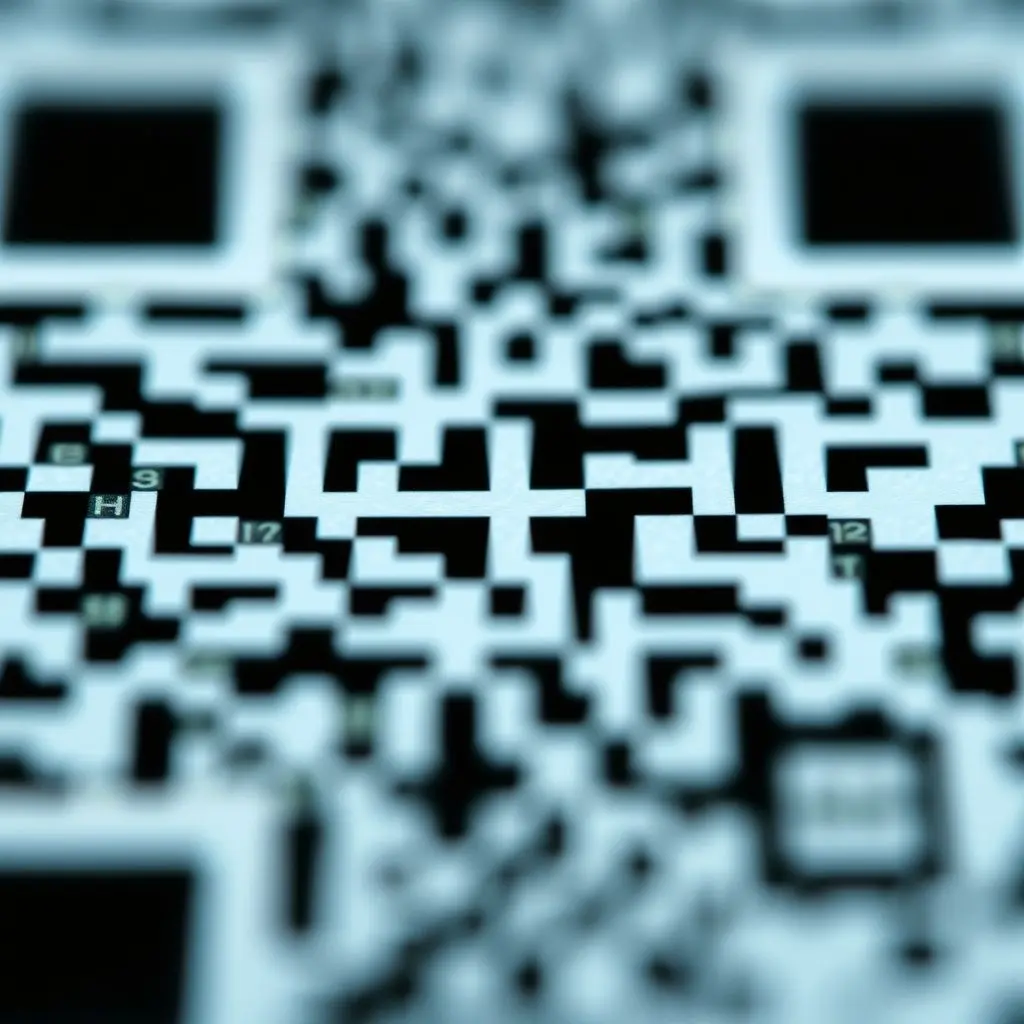
The Anatomy of a Digital Messenger: Unpacking QR Code Structure
To understand how QR codes store information, we need to dissect their structure. Each part plays a critical role:
1. Finder Patterns
These are the three large squares located at the top-left, top-right, and bottom-left corners of the QR code. Think of them as anchor points. They help the scanner quickly identify that it’s looking at a QR code (not just a random pattern), determine its orientation, and even gauge its size. Their distinct shape allows for detection regardless of the angle at which the code is scanned.
2. Alignment Pattern(s)
These are smaller squares, typically found in larger QR codes. If the code is very large or is being scanned on a curved surface, it might appear distorted to the scanner. Alignment patterns help the scanner correct for this distortion, ensuring the grid of modules (the small black and white squares that make up the code) is interpreted correctly.
3. Timing Patterns
These are alternating black and white modules that run horizontally and vertically between the three finder patterns. They define the grid, helping the scanner determine the size of individual data modules and synchronize its reading. It’s like the staff lines in sheet music, giving context to the notes (or in this case, data bits).
4. Quiet Zone
This is the blank white border around the entire QR code. It’s absolutely essential. The quiet zone helps the scanner differentiate the QR code from its surroundings, preventing interference from other graphical elements or text. A missing or insufficient quiet zone is a common reason why QR codes fail to scan.
5. Format Information
This small but crucial area, located near the finder patterns (typically in two strips), stores information about the error correction level being used and the mask pattern applied to the data region. Think of it as the QR code’s ‘settings’ menu, which the scanner reads first to know how to interpret the rest of the data.
6. Version Information
QR codes come in different “versions,” from Version 1 (21×21 modules) to Version 40 (177×177 modules). For larger QR codes (Version 7 and above), there’s a dedicated area that specifies the exact version. The version dictates the code’s overall size and thus its data capacity. It’s like knowing the model number of your digital container.
7. Data and Error Correction Codewords
This is the largest part of the QR code, comprising the remaining modules. These modules store the actual information (like a URL or text) encoded into binary form, along with error correction codewords. We’ll delve into error correction magic shortly!
The Language They Speak: How Information is Encoded
At its core, all data in a QR code is boiled down to binary – a series of 0s and 1s. A dark module typically represents a ‘1’ and a light module a ‘0’ (or vice-versa, depending on the mask pattern). But how does your text message or website link turn into these squares?
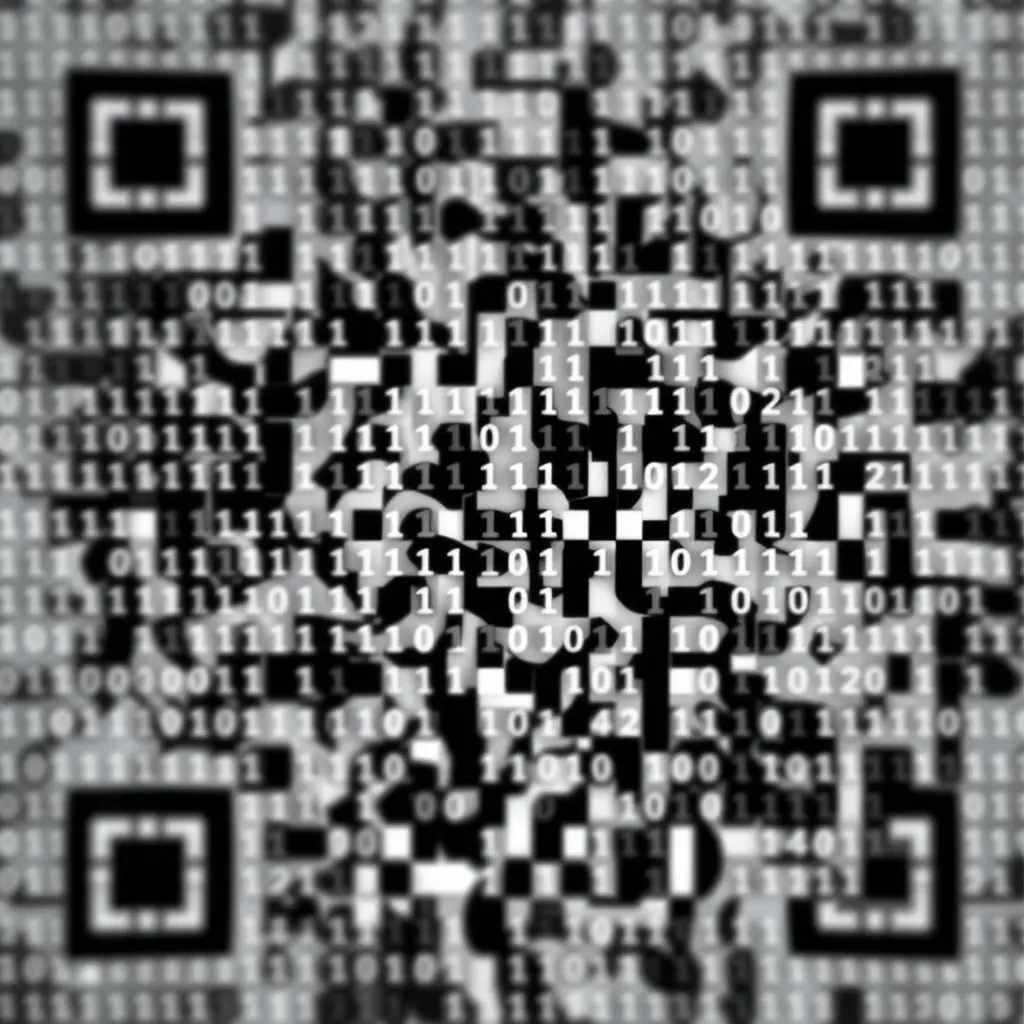
Binary is King
The input data (e.g., “https://techotv.com”) is first converted into a sequence of bits according to a specific encoding mode.
Encoding Modes
QR codes support several encoding modes to store data more efficiently depending on its type:
- Numeric Mode: For decimal digits 0-9. Most compact for numbers.
- Alphanumeric Mode: For digits 0-9, uppercase letters A-Z, and nine special characters (space, $, %, *, +, -, ., /, :).
- Byte Mode: For characters in the ISO-8859-1 character set (which includes most common Western European languages). This mode can also handle raw binary data.
- Kanji Mode: For Shift JIS characters, specifically for encoding Japanese characters efficiently.
- Extended Channel Interpretation (ECI) Mode: Allows specifying different character sets or interpretations of byte values.
- FNC1 Mode: Used for specific applications in logistics and industry, often related to GS1 standards.
The choice of mode affects how many characters can be stored. For instance, numeric mode uses fewer bits per character than byte mode.
The Encoding Process
Once the data is converted to a bitstream using the chosen mode, it’s broken down into 8-bit codewords. Then, error correction codewords are generated and added to this sequence. Finally, this entire sequence of data and error correction codewords is arranged into the matrix of modules, applying a mask pattern to improve scannability by breaking up large blocks of same-colored modules.
How Much Can They Spill? (Data Capacity)
The amount of information a QR code can hold depends on several factors:
- Version: Higher versions (larger codes) have more modules and thus higher capacity. A Version 1 code (21×21 modules) holds significantly less data than a Version 40 code (177×177 modules).
- Encoding Mode: As mentioned, numeric data is more compact than alphanumeric or byte data.
- Error Correction Level: QR codes have four levels of error correction: L (Low, ~7% recovery), M (Medium, ~15% recovery), Q (Quartile, ~25% recovery), and H (High, ~30% recovery). A higher error correction level uses more space for redundant data, thus reducing the overall data capacity but increasing the code’s robustness against damage.
For example, a Version 40 QR code at error correction level L can store up to 7,089 numeric characters, 4,296 alphanumeric characters, or 2,953 bytes of binary data. At level H, these numbers decrease because more space is dedicated to error correction.
Built Tough: The Magic of Error Correction
Ever scanned a QR code that was a bit smudged, slightly torn, or had a piece missing, and it still worked? That’s not luck; it’s sophisticated mathematics at play, specifically the Reed-Solomon error correction algorithm.
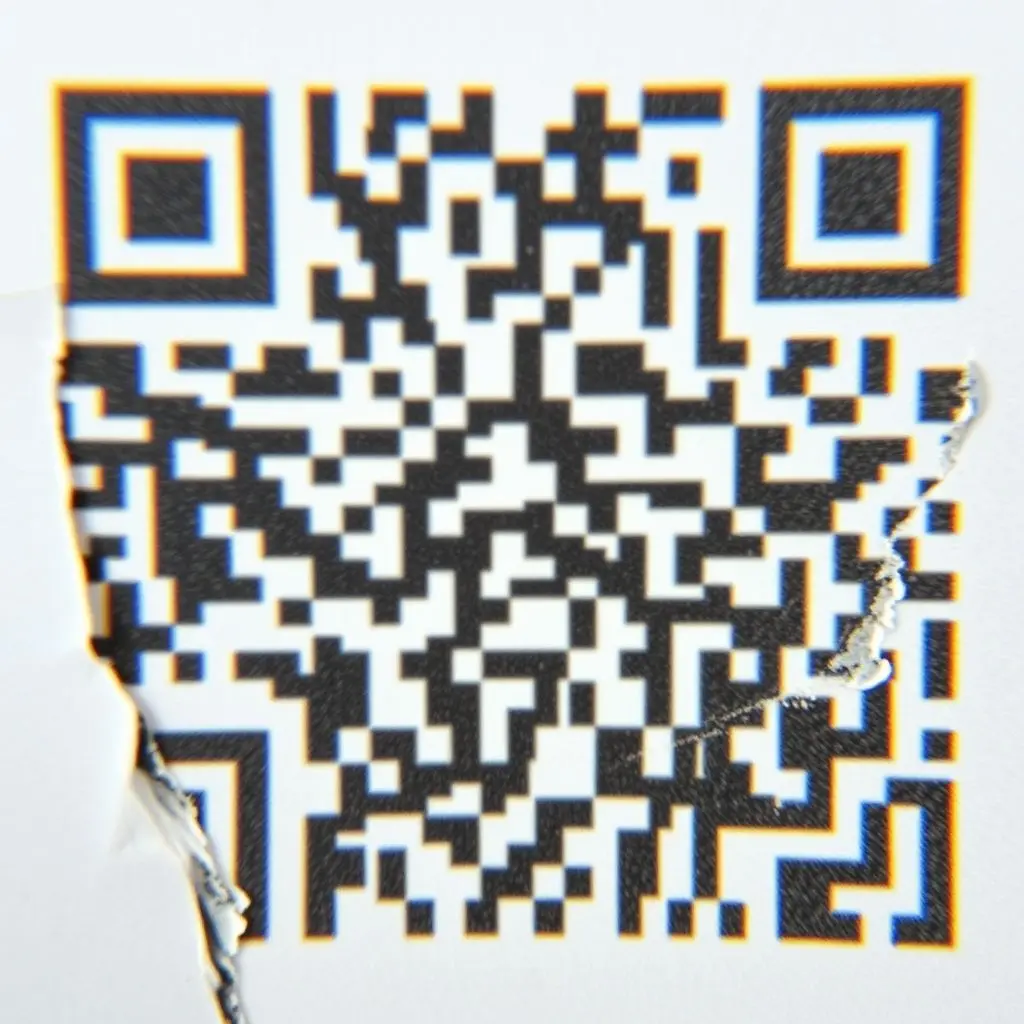
During the encoding process, redundant data (the error correction codewords) is intelligently interwoven with the actual data. If part of the QR code is damaged or obscured, the scanner can use these codewords to reconstruct the missing or corrupted data. The higher the error correction level, the more damage the code can sustain and still be readable.
This resilience is a key reason for the QR code’s widespread adoption. It can withstand a fair amount of wear and tear in real-world environments.
The Scan-tastic Moment: How Scanners Read QR Codes
When you point your smartphone camera or a dedicated scanner at a QR code, a rapid sequence of events unfolds:
- Locating the Code: The scanner looks for the three finder patterns. Their unique structure allows for quick identification and orientation, even if the code is tilted or upside down.
- Grid Normalization: Using the finder patterns, timing patterns, and (if present) alignment patterns, the scanner maps out the grid of modules. It compensates for any perspective distortion.
- Reading Format & Version: The scanner decodes the format information to understand the error correction level and mask pattern. It also reads version information if present.
- Extracting Raw Data: The scanner then reads each module (black or white) to get a binary string. The mask pattern is reversed to get the original data stream.
- Error Correction: The Reed-Solomon algorithm checks the data for errors. If errors are found (and are within the capacity of the chosen error correction level), it corrects them.
- Decoding Data: Finally, the corrected binary data is decoded according to the encoding mode specified (numeric, alphanumeric, byte, etc.) to retrieve the original information (e.g., the URL, text, or contact info).
All of this happens in a fraction of a second!
Beyond the Basics: Where QR Codes Shine
While our focus is on how they store info, it’s worth noting their versatility:
- Marketing & Advertising: Linking to websites, product pages, or promotional offers.
- Contactless Payments: Facilitating quick and secure transactions.
- Information Sharing: Restaurant menus, event details, Wi-Fi network credentials.
- Ticketing & Access Control: Boarding passes, event tickets, entry verification.
- Inventory Management: Tracking products in supply chains (their original purpose!).
Frequently Asked Questions (FAQs) About QR Codes
- Q1: Can QR codes store images or sound directly?
- A: Not really. While a QR code could technically store a tiny amount of raw image or sound data if encoded in binary, it’s highly impractical due to size limitations. Instead, QR codes typically store a URL that links to an image, audio file, video, or any other online content.
- Q2: Are QR codes secure?
- A: The QR code itself is just a data container; it’s neither inherently secure nor insecure. The security risk comes from the content it links to or the action it triggers. A QR code could link to a malicious website (phishing) or try to initiate an unwanted action. Always be cautious about scanning QR codes from untrusted sources. Many modern smartphones will show you the URL before opening it, giving you a chance to vet it.
- Q3: Do QR codes expire?
- A: The QR code pattern itself does not expire. It will always encode the same data. However, if the QR code links to a webpage, that webpage might be taken down, or the domain might expire, making the QR code lead to a dead link. So, while the code is permanent, its utility can diminish if the linked content isn’t maintained.
- Q4: What’s the main difference between a QR code and a traditional barcode?
- A: The primary differences are dimensionality and data capacity. Traditional (1D) barcodes store data in a single dimension (horizontally) and hold a small amount of information, typically an item identifier. QR codes (2D) store data in two dimensions (horizontally and vertically), allowing them to hold significantly more information (thousands of characters) and support various data types.
The Unfolding Scroll: More Than Just Squares
From their humble beginnings in auto parts tracking to becoming an integral part of our digital interactions, QR codes have proven to be remarkably versatile and robust. Their ability to pack a significant amount of data into a small, easily scannable format, coupled with strong error correction, has cemented their place in our tech-driven world.
So, the next time you scan one of those pixelated squares, take a moment to appreciate the intricate engineering and clever data encoding that makes it all possible. It’s not just a jumble of black and white; it’s a tiny, powerful messenger, quietly bridging the physical and digital realms, one quick scan at a time.
